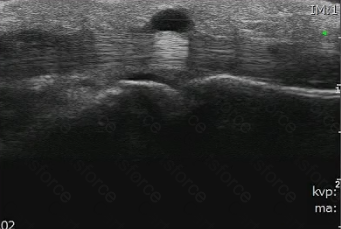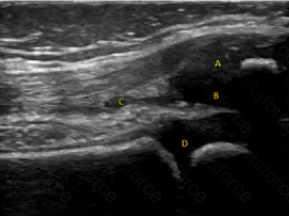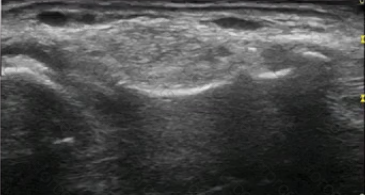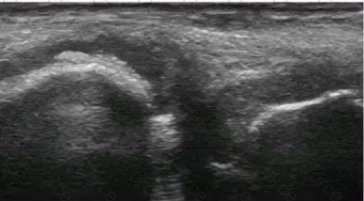What is the MOST prominent ultrasound artifact depicted in this image?

Which of the following statements regarding ultrasound probe care is MOST accurate?
In performing an in-plane ultrasound-guided procedure, it is helpful to orient the transducer so that the:
By comparing gray-scale images from before pharmacologic treatment and after months of treatment, rheumatologists are able to assess patient improvement and response with regard to:
A patient with diabetes presents with right ankle pain and swelling. The practitioner is unsure of the cause and decides to perform a musculoskeletal ultrasound examination. Which of the following in the practitioner's report is the BEST statement of indication for this study?
A 3-year-old child with juvenile idiopathic arthritis presents for an intra-articular corticosteroid injection of the knee. Using ultrasound guidance, which location should be targeted with a needle?

Which of the following statements is CORRECT with regard to the use of ultrasound equipment for children?" followed by four answer choices:
A 80-year-old man presents with two weeks of wrist swelling and pain. His exam reveals swelling and tenderness over the dorsum of his right wrist as well as synovial swelling of the second and third metacarpophalangeal joints of his left hand. His serum uric acid concentration is 6.0 mg/dL. The longitudinal and transverse images of the dorsal aspect of his right wrist are shown below. What is the MOST likely diagnosis?


Which of the following protocols would be MOST consistent with a complete routine ultrasound examination of the shoulder?
Which of the following is MOST accurate regarding high-level disinfection of a probe?